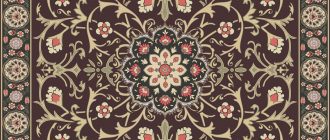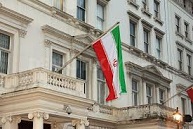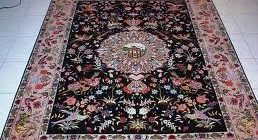Interested in Buying an antique Persian Rug? Want to know the origins of your antique Persian Carpet? Read this information on the history of carpet and Rug making in Iran
Persian rugs as believed to be among the oldest and most beautiful of oriental carpets in history. The traditional method of weaving Persian carpets and rugs involved painstakingly hand tying thousands of knots. Persian carpets are famous for their intricately detailed design which is characteristic of all Iranian art. Persian carpets often feature geometric patterns which are a reflection of Islamic influences, although many Persian rugs depict natural scenes of animal and plant wildlife. One of the reasons that Persian carpets often feature floral patterns is that when their Iranian owners sit on them they can be reminded of traditional Iranian gardens. Aside from providing you with great pleasure and brightening up your home, buying a persian rug can be a wise investment as they often appreicate in value provided you know a little about Persian carpet care and repair.
Ancient Persian Carpets
The traditional method of weaving carpets is often a closely guarding family secret. The techniques for Persian rug making are passed from generation to generation throughout history. It is believed that the initial establishment of Persian carpets as an Iranian art began at the time of the Persian king Cyrus in 500BC, one of the greatest rulers in Persian history. However, it is believed that the Persian nomad tribes of modern day Iran had been weaving Nomad Rugs using sheep’s wool and hand knots which they used for lining the floors of their tents even before the time of Cyrus the Persian king.
Turkish Seljuk Influenced Persian Rugs
During the eleventh Century the Turkish Seljuk tribes invaded and ruled Persia bringing with them Turkish influences in rug weaving that were transferred to Persian carpets. This included the use of Turkish carpet knots which differ from those found in traditional hand-knotted Persian carpets. However, even after Seljuk influence in Iran waned, the Turkish methods of carpet weaving still remained in Turkish areas of Iran such as Tabriz.
Safavid Persian Rugs
The era of the Safavid dynasty is considered the best period in history for Persian carpet weaving. It was at this time during the 16th century that Persian carpets began to be exported to European countries where they were appreciated for their great beauty. The safavid ruler Shah Abbas who ruled from the ancient Persian city of Esfahan created vast workshops in which Persian carpet weavers could apply their skills. Most of the Persian antique rugs in existence today come from this period in Iranian history.
Persian Carpets Under Afghan Influence
The decline of Persian Safavid power was brought about by an Afghan invasion in the 18th century. Although Afghan influence did not last long in Iran, Persian carpet weaving activity was much less prolific than in previous centuries and comparatively few 18th century antique Persian rugs from this period of Iranian history are still in existence.





